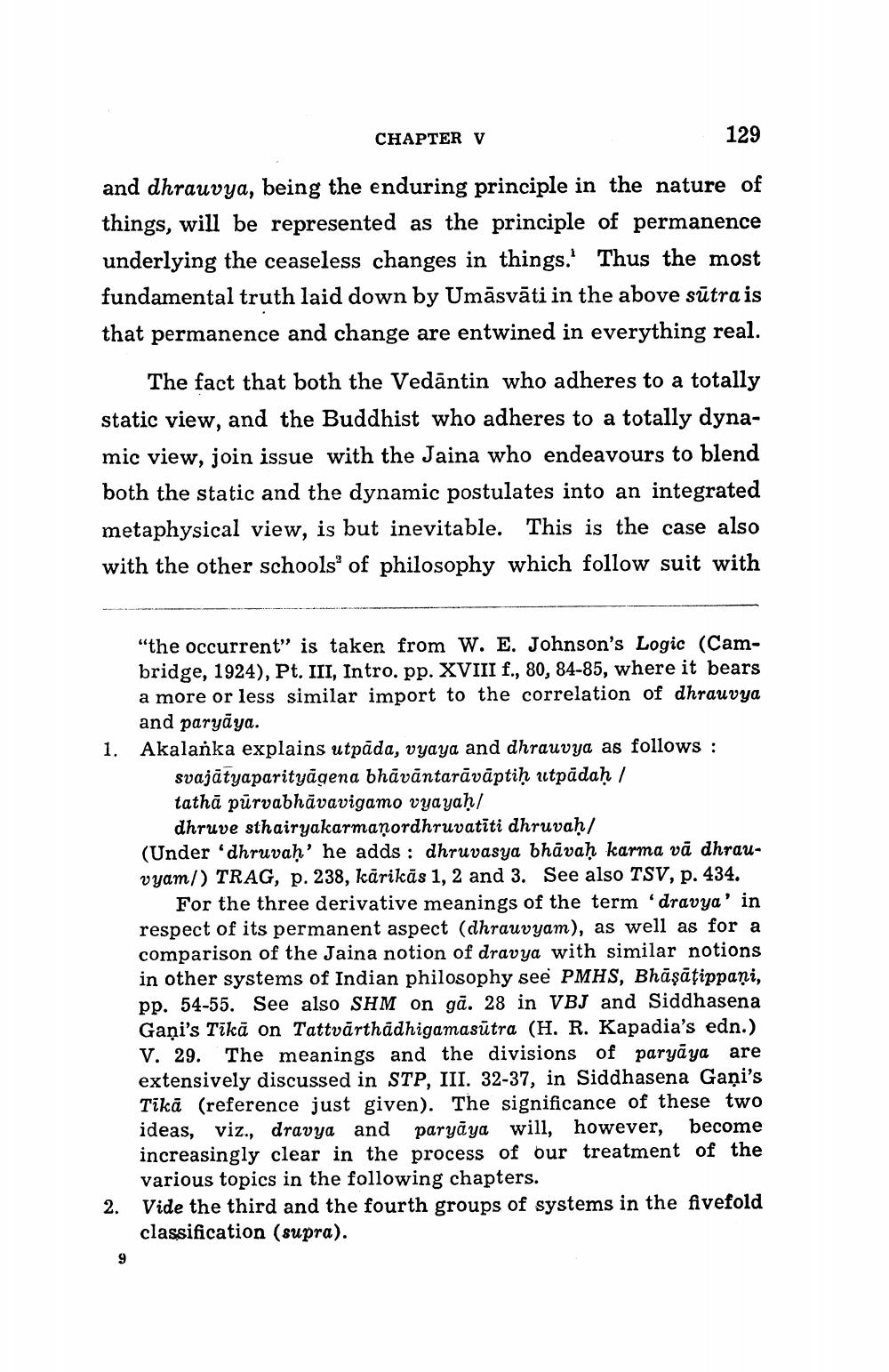________________
CHAPTER V
129
and dhrauvya, being the enduring principle in the nature of things, will be represented as the principle of permanence underlying the ceaseless changes in things. Thus the most fundamental truth laid down by Umāsvāti in the above sūtra is that permanence and change are entwined in everything real.
The fact that both the Vedāntin who adheres to a totally static view, and the Buddhist who adheres to a totally dynamic view, join issue with the Jaina who endeavours to blend both the static and the dynamic postulates into an integrated metaphysical view, is but inevitable. This is the case also with the other schools' of philosophy which follow suit with
"the occurrent" is taken from W. E. Johnson's Logic (Cambridge, 1924), Pt. III, Intro. pp. XVIII f., 80, 84-85, where it bears a more or less similar import to the correlation of dhrauvya
and paryāya. 1. Akalanka explains utpäda, vyaya and dhrauvya as follows :
svajātyaparityāgena bhāvāntarāvāptiḥ utpadaḥ / tathā pūrvabhāvavigamo vyayaḥ/
dhruve sthairyakarmaṇordhruvatiti dhruvaḥ/ (Under 'dhruvaḥ' he adds : dhruvasya bhāvaḥ karma vā dhrauvyam/) TRAG, p. 238, kārikās 1, 2 and 3. See also TSV, p. 434.
For the three derivative meanings of the term 'dravya' in respect of its permanent aspect (dhrauvyam), as well as for a comparison of the Jaina notion of dravya with similar notions in other systems of Indian philosophy see PMHS, Bhāşātippani, pp. 54-55. See also SHM on gā. 28 in VBJ and Siddhasena Gani's Tikā on Tattvārthadhigamasutra (H. R. Kapadia's edn.) V. 29. The meanings and the divisions of paryāya are extensively discussed in STP, III. 32-37, in Siddhasena Gani's Tikā (reference just given). The significance of these two ideas, viz., dravya and paryāya will, however, become increasingly clear in the process of our treatment of the
various topics in the following chapters. 2. Vide the third and the fourth groups of systems in the fivefold
classification (supra).




